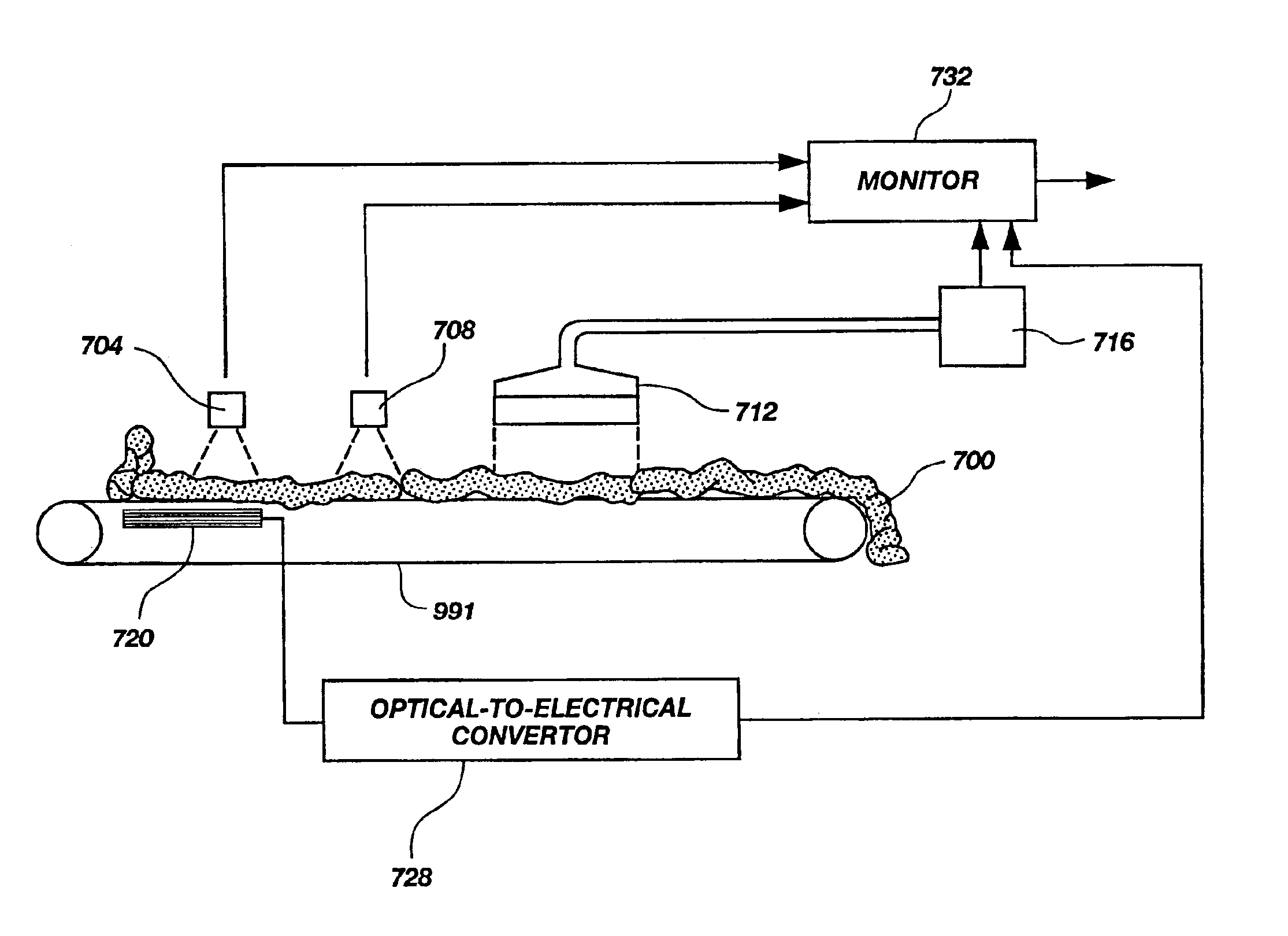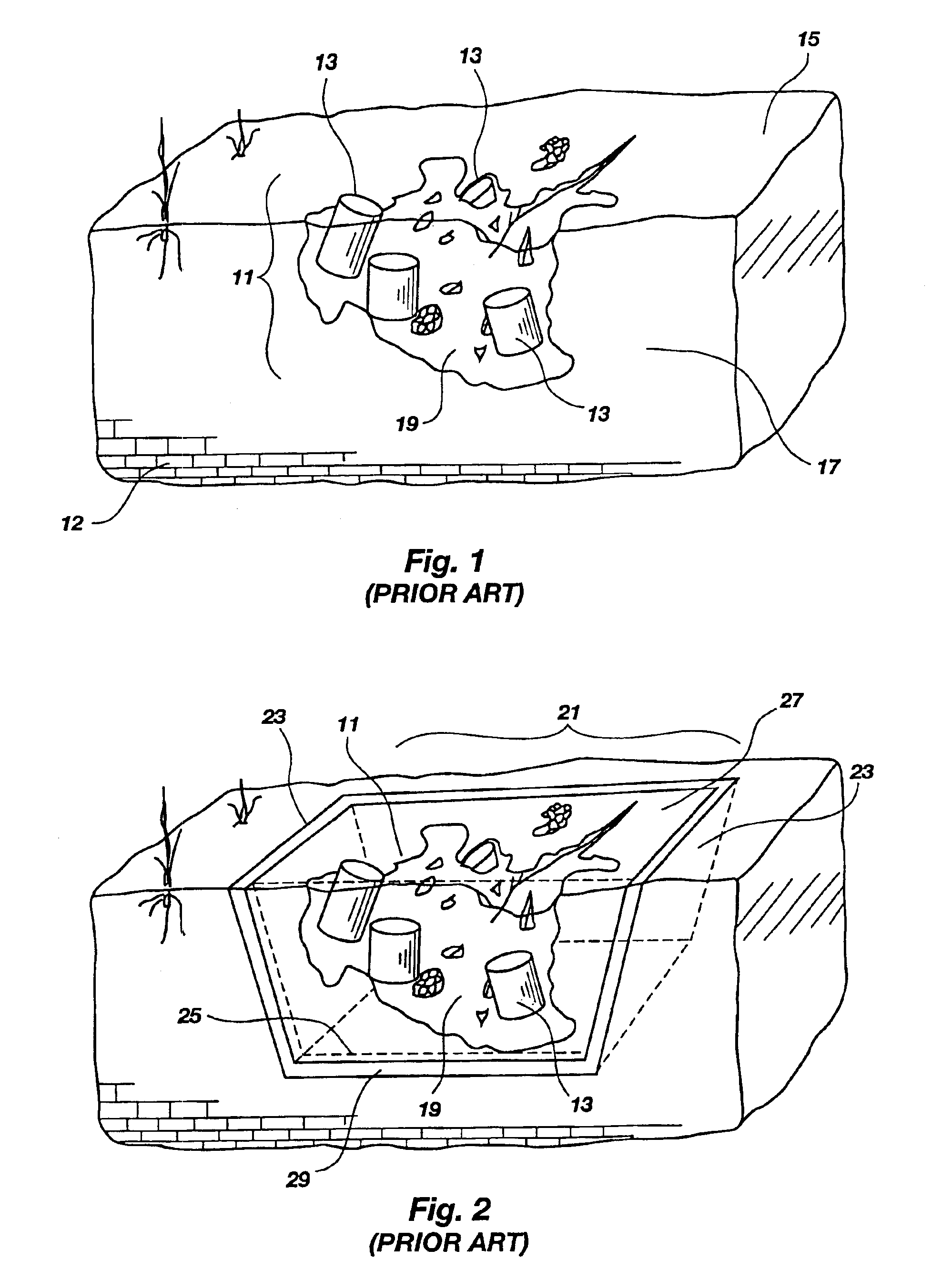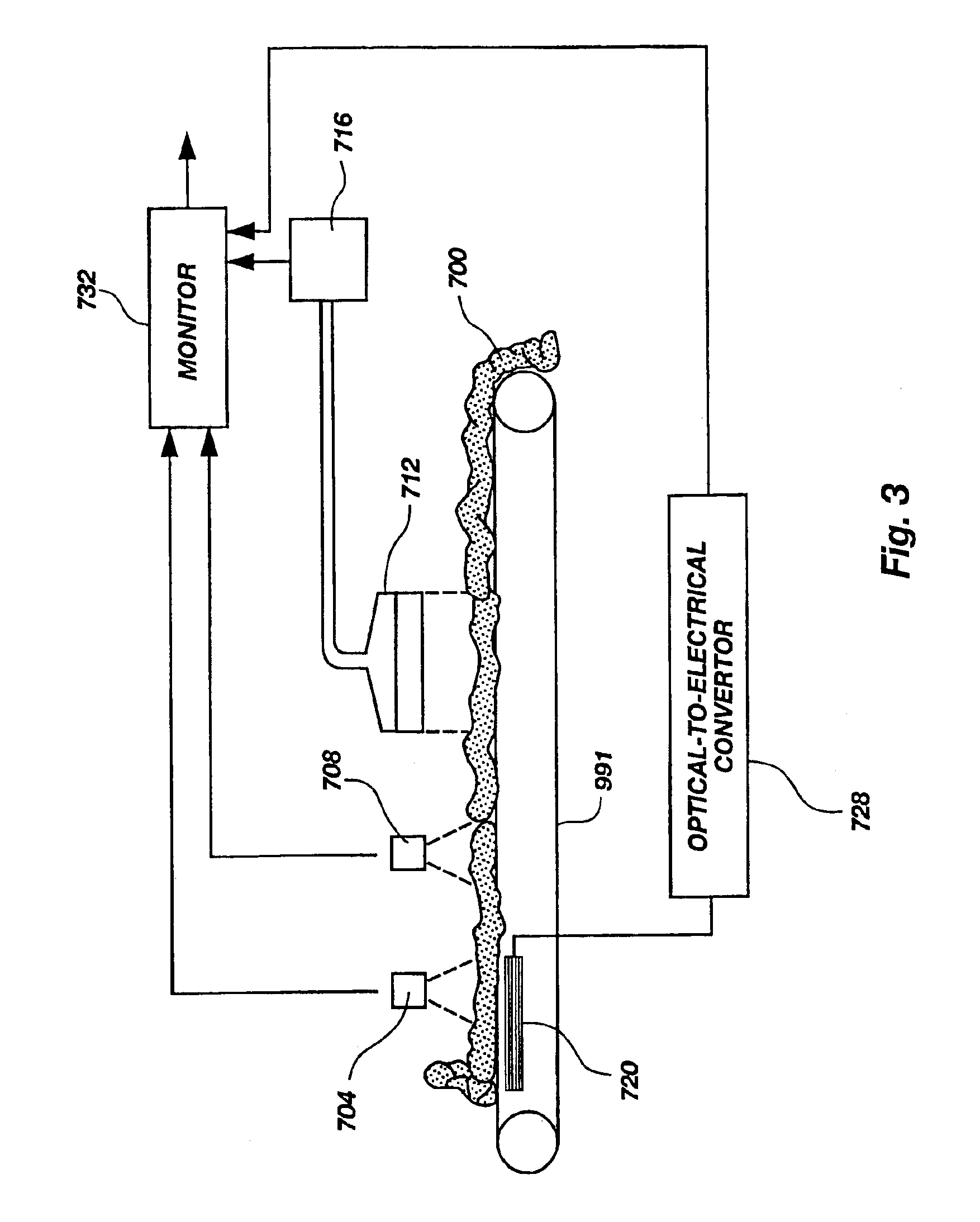Sensor system for buried waste containment sites
a waste containment site and sensor technology, applied in the field of sensor systems, can solve the problems of difficult to provide a barrier of consistent strength, difficult to maintain balance, and expensive methods, and achieve the effect of improving safety and avoiding accidents
- Summary
- Abstract
- Description
- Claims
- Application Information
AI Technical Summary
Benefits of technology
Problems solved by technology
Method used
Image
Examples
Embodiment Construction
[0037]Referring now to FIG. 1, a typical waste site 11 is shown containing drums 13 filled with hazardous waste, both on the surface 15 and buried under the ground 17. Contaminants 19, leaking from the drums 13, threaten to migrate into a water table 12, unless some type of containment barrier can be provided.
[0038]One such containment barrier 21 is shown in FIG. 2 to include side barriers or walls 23 and a floor or horizontal barrier 29. The side barriers 23 may be made using conventional methods and interconnected to the horizontal barrier 29. Additionally, the waste site 11 could be completely encapsulated by forming an upper barrier cover (not shown) and interconnecting it with the side barriers 23 and front and rear barriers 25 and 27 (front barriers 25 are shown in phantom line in FIG. 2). The afore-cited co-pending patent application describes how containment barriers of the type described may be constructed using apparatus such as that to next be briefly described.
[0039]FIG....
PUM
 Login to View More
Login to View More Abstract
Description
Claims
Application Information
 Login to View More
Login to View More - R&D
- Intellectual Property
- Life Sciences
- Materials
- Tech Scout
- Unparalleled Data Quality
- Higher Quality Content
- 60% Fewer Hallucinations
Browse by: Latest US Patents, China's latest patents, Technical Efficacy Thesaurus, Application Domain, Technology Topic, Popular Technical Reports.
© 2025 PatSnap. All rights reserved.Legal|Privacy policy|Modern Slavery Act Transparency Statement|Sitemap|About US| Contact US: help@patsnap.com



